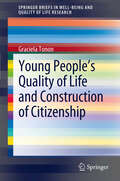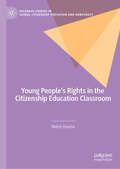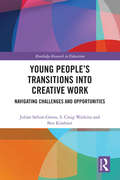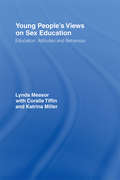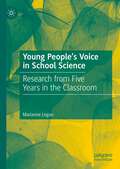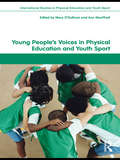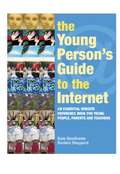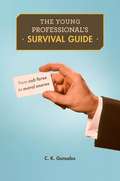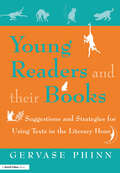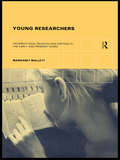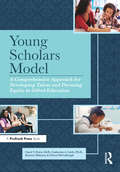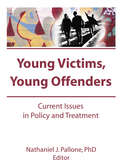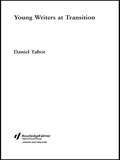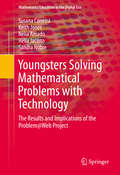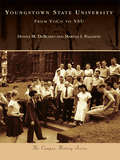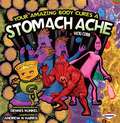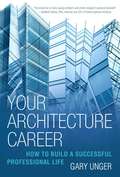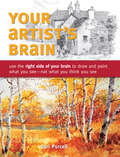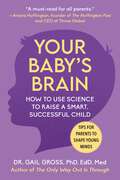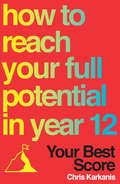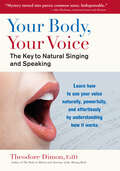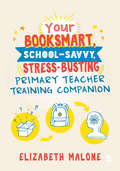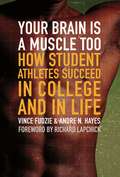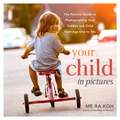- Table View
- List View
Young People's Quality of Life and Construction of Citizenship
by Graciela TononThe study of quality of life refers to the material environment (social welfare) and psychosocial environment (wellbeing). It has been defined as a concept that implies the objective and subjective dimension that Cummins (1997) first studied in seven domains. The use of domains in the quality of life study allows a more precise measurement than the one that could have been reached through simple questions, since psychometric scales are used and if the addition of domains is equivalent to the totality of life satisfaction, then the group of domains is a valid measure of quality of life. In the case of young people, it has been observed that even if they live in negative physical, social and contextual conditions, they can nevertheless experience a relatively positive experience in relation to their quality of life, depending on the strategies and capabilities that they generate in relation to the context. Similarly, young people that live in favorable socioeconomic conditions and with a trouble free psychological situation may experience a relatively poor evaluation of their position in life (Patrick et al). oung people do not form a homogenous group and, in this sense, it is not possible to generalize about youth; they interact with the environment in which they live and they are a product of the history they happen to live, in this way they transit different vital scenarios in daily life that affect their quality of life. The social representations about youth that each population has, in each historical moment, are embedded in the social context in which young people live and develop, conditioning every-day life and /or creating related stereotypes. The concept of youth is a social construction built conjointly by all members of society in the historical moment in which they live. Young people interact with the environment in which they live and they are a product of the history they happen to live. Authors like Urresti (1999) define youth from a point of view that takes into account the living together of different generations in different societies, thus being impossible to compare young people of today with those of two or three decades ago; in addition, he states that it is necessary to situate the understanding of youth within the historical and social moment in which they live. Nowadays the predominant adult model is based in individualism, and even if an intergenerational dialogue is necessary, it is difficult for young people to achieve this kind of communication with adults that, in some cases, are living "stages of youth" or that need to be "forever young". Young people live in uncertainty, with a limited perspective for future action, assigning their own meaning to events and facts, according to their fundamental concerns that are significantly different from those of their parents' generation. In the other side the process of globalization and the protagonist social role of the new informational and communicational technologies, produce that the possibilities to expand individual freedoms increase, but not all young people can manage with it (Lechner, 2002). What young people need in order to construct their citizenship and feel satisfied, varies according to the different societies, especially considering that most of them live a fragile situation. As Cortina (2003:7-9) states, the idea of citizenship always transcends individualism, because the citizen is somebody that exists together with others, and those others are equal to him before the city, is somebody that deliberates with others, that acts with others conjointly, that assumes the protagonist role of his own life, in this way citizen is not only that who the law protects, but that who participates in the public issues. Speaking about young people we propose to recognize them from their equal dignity because "recognition is not only a courtesy that we owe others: it is an essential human need" (Taylor, 1993:46). This recognition is based in human dignity and tends to protect the basic rights of people as individuals and to recognize the particul...
Young People's Rights in the Citizenship Education Classroom (Palgrave Studies in Global Citizenship Education and Democracy)
by Helen HannaThis book explores the rights held by young people in the citizenship education classroom in the divided societies of Northern Ireland and Israel. Against the backdrop of a long history of protracted conflict and division, the author analyses how international rights obligations are reflected in the contested citizenship education curriculum in secondary schools. Drawing upon extensive qualitative data as well as policy and curriculum documents, the author reveals that understandings of education rights can be oriented around three themes – minority group representation in the curriculum, dealing with difference through pedagogy, and preparing young people for life in a (divided) society. This can be mapped onto the 42-A rights framework where education should be ‘acceptable’ and ‘adaptable’. However, the variety of interpretations held by participants raises questions regarding the ‘universality’ of international frameworks for education rights, and the workability of such frameworks in the national and divided contexts. While the contexts of Northern Ireland and Israel have much in common, they are rarely compared: this book will show that their comparison is as relevant as ever, as issues of identity continue to affect everyday school life. This book will be of interest to citizenship and history education scholars, as well as those who are concerned with the application of international human rights law.
Young People’s Transitions into Creative Work: Navigating Challenges and Opportunities (Routledge Research in Education)
by Julian Sefton-Green S Craig Watkins Ben KirshnerExploring how formal and informal education initiatives and training systems in the US, UK and Australia seek to achieve a socially diverse workforce, this insightful book offers a series of detailed case studies to reveal the initiative and ingenuity shown by today’s young people as they navigate entry into creative fields of work. Young People’s Journeys into Creative Work acknowledges the new and diverse challenges faced by today's youth as they look to enter employment. Chapters trace the rise of indie work, aspirational labour, economic precarity, and the disruptive effects of digital technologies, to illustrate the oinventive ways in which youth from varied socio-economic and cultural backgrounds enter into work in film, games production, music, and the visual arts. From hip-hop to new media arts, the text explores how opportunities for creative work have multiplied in recent years as digital technologies open new markets, new scenes, and new opportunities for entrepreneurs and innovation. This book will be of great interest to researchers, academics and postgraduate students in the fields of youth studies, careers guidance, media studies, vocational education and sociology of education.
Young People's Views on Sex Education: Education, Attitudes and Behaviour
by Dr Lynda Measor Lynda Measor Katrina Miller Coralie TiffinBased on observation of sex education programmes and in-depth interviews with young people, the authors aim to understand more about adolescent's attitudes to sexuality and their sexual behaviour in order to develop policies which will meet their needs more appropriately and effectively.Issues covered in this interesting and accessible book include the ways adolescent informal culture affects sex education programmes and practice; the impact of gender inequality on sex education and safer sex behaviours; legislation and policy frameworks which effect sex education policies; the way young people see legislation and evaluate sex education programmes; and the impact health professionals can have in school sex education.The authors contend that the insights into the values and views that young people bring to bear on the sex education they receive should have an important role to play in the development of policy and practice of those involved in sex education work.
Young People’s Voice in School Science: Research from Five Years in the Classroom
by Marianne LoganThis book highlights young people’s changing attitudes toward and interest in science over the course of a five-year longitudinal study. Utilizing a mixed-methods approach, the author presents rich data from children and young people, as well as their parents and teachers. By providing a glimpse of science pedagogy from the perspective of young people and those who work with them, the book identifies factors that affect students' interest in science throughout their primary and secondary education. The book also examines a posthumanist philosophical approach to science education and emphasizes the interrelationship of all things within the context of science education.
Young People's Voices in Physical Education and Youth Sport (Routledge Studies in Physical Education and Youth Sport)
by Mary O’SullivanHow do children and young people experience and understand sport and physical activity? What value do they attach to physical education and physical literacy? This important new book attempts to engage more directly than ever before with the experiences of young people by placing the voices of the young people themselves at the centre of the discussion. As the need to listen to young people becomes increasingly enshrined in public policy and political debate, this book illuminates our understanding of an important aspect of the everyday lives of many young people. With contributions from leading researchers and educationalists from around the world, the book draws on a diverse range of methodological and theoretical perspectives to demonstrate how we can better understand the unique perspectives of young people, how teachers and coaches can respond to and engage with the voices of young people, and how young people can be afforded opportunities to shape their education and leisure experiences. The book presents a fascinating range of case studies from around the world, including the experiences of African American girls and masculine sporting identities in Australia, and addresses both theoretical and policy debates. Young People’s Voices in Physical Education and Youth Sport is essential reading for any serious student or professional with an interest in PE, youth sport, sports development, sports coaching, physical activity and health, education or youth work.
The Young Person's Guide to the Internet: The Essential Website Reference Book for Young People, Parents and Teachers
by Kate Hawthorne Daniela SheppardIn this easy-to-use reference, over 1600 websites have been carefully researched and selected with educational and recreational needs in mind. Sorted into thirty categories including all National Curriculum subjects, the book provides brief descriptions of each website and the resources you can expect to find there. Some of the wide-ranging categories include art, attractions, careers and students, environment, film, TV and radio, reference and revision. The format is unique and simple, making this a perfect resource for young people, parents and teachers and an excellent support tool for schools and libraries.
The Young Professional’s Survival Guide: From Cab Fares To Moral Snares
by C. K. GunsalusA nationally recognized expert on professional ethics uses pungent real-world examples to help people new to the work world recognize ethical situations that can lead to career-damaging mistakes—and prevent them. Gunsalus offers questions to ask yourself, sample scripts to use on others, and guidance in handling disputes fairly and diplomatically.
Young Readers and Their Books: Suggestions and Strategies for Using Texts in the Literacy Hour
by Gervase PhinnFirst Published in 2000. Routledge is an imprint of Taylor & Francis, an informa company.
Young Researchers: Informational Reading and Writing in the Early and Primary Years
by Margaret MallettInformational kinds of reading are crucial in every lesson. This book looks at how we can encourage children from the very beginning to think of themselves as young researchers using skills and strategies for clear purposes. It argues that the creative practitioner nurtures children's sense of wonder and curiosity about the world and all its phenomena.Packed full of advice on how to use the most stimulating and exciting texts and the liveliest approaches, the book celebrates the good practice of teachers and student teachers in a large number of classroom case studies.The content includes:* a summary of the recent developments and a framework of principles to inform good practice in this challenging aspect of literacy* chapters concentrating on particular age groups - beginning with the nursery and ending with the later primary years - and thus taking up an essentially developmental approach* an assessment of recent research and how findings can be put to practical and creative use in the classroom.A central message is that children benefit from collaborating with teachers and peers at every stage of finding out. The spoken language energises informational reading and writing, making the sharing of the fruits of children's research highly enjoyable. This book will inspire you and lead to the very best practice.
Young Scholars Model: A Comprehensive Approach for Developing Talent and Pursuing Equity in Gifted Education
by Carol V. Horn Catherine A. Little Kirsten Maloney Cheryl McCulloughHistorically, students from ethnically, linguistically, and economically diverse backgrounds have been overlooked and underidentified for gifted services. The Young Scholars Model is a comprehensive approach to addressing the issue of underrepresentation through engagement of a schoolwide effort and commitment. This book:Shares how the model leads to increased representation in identification and student success in advanced academic programs.Describes the four major components of the model and how they integrate in practice.Supports efforts to find and nurture potential in students who have historically been overlooked for gifted services.Includes steps for implementation and practical guidelines that schools and districts will be able to follow with fidelity and success.
Young Victims, Young Offenders: Current Issues in Policy and Treatment
by Letitia C PalloneAt a time when the nation is focused on devising new responses to street crime and on reforming the juvenile justice system, this book brings together in a single volume, current and emerging perspectives on the control of crime by and against children and youth. Young Victims, Young Offenders provides you with an overview of established and emerging practices in treating juvenile offenders and adults who prey on children and youth.This book explores the nature and causes of criminal offenses committed by and against juveniles. While children and youth show up statistically as offenders, they also figure disproportionately as victims. The contributing authors consider both of these aspects as they discuss current programs for the treatment of youths who commit or are victimized by criminal offenses.Topics of a wide range are addressed in Young Victims, Young Offenders for people--like you-- who work with our nation’s youth. A sampling of topics includes: How states address child maltreatment through reporting laws and special courtroom procedures Associations between selected psychosocial variables and chronic delinquency Implications of mandatory Child Abuse Reporting Laws on treating offenders The success of diversion during a 20-year period in a youth service bureau Clinical techniques in the treatment of juvenile sex offenders A study on the effectiveness of an intervention program in Iowa for youthful offendersThis book is useful for the pre-service student pursuing course work in juvenile delinquency, correctional counseling, probation, parole, and social work. At the in-service level, correctional counselors, probation officers, parole officers, social workers, psychologists, psychiatrists, correctional administrators, and child care workers can find much to challenge and enhance their effectiveness in their work with young victims and offenders.
Young Writers at Transition (Language and Literacy in Action)
by Daniel TaborHow does children's writing develop in the transition from primary to secondary school? Young Writers at Transition tracks a group of pupils from the end of Year 6 into the first half of Year 7. It analyses in detail the teaching and uses of writing at this important stage in their education, and uncovers some revealing findings concerning the experiences, perceptions and expectations of pupils, teachers and parents about writing.The authors link their findings to the broader issues of policy and our understanding about how writing is taught and used in transition. This timely book examines issues such as: * transition, continuity and progression, and how these can be managed to ensure standards do not suffer* the variety of teaching and uses of writing in Years 6 and 7* secondary school teachers' views of writing, and what practice is most effective for them* different ways of thinking about transition, continuity and progression* how the National Literacy Strategy has affected continuity and progression in children's writing at transition. This interesting study of the uses of writing will be a valuable resource, with practical suggestions, to teachers and educators in primary and secondary schools.
Youngsters Solving Mathematical Problems with Technology
by Susana Carreira Keith Jones Nélia Amado Hélia Jacinto Sandra NobreThis book contributes to both mathematical problem solving and the communication of mathematics by students, and the role of personal and home technologies in learning beyond school. It does this by reporting on major results and implications of the Problem@Web project that investigated youngsters' mathematical problem solving and, in particular, their use of digital technologies in tackling, and communicating the results of their problem solving, in environments beyond school. The book has two focuses: Mathematical problem solving skills and strategies, forms of representing and expressing mathematical thinking, technological-based solutions; and students´ and teachers´ perspectives on mathematics learning, especially school compared to beyond-school mathematics.
Youngstown State University: From YoCo To YSU
by Donna M. Deblasio Martha I. PallanteAs Youngstown State University prepares to celebrate its centennial anniversary in 2008, this book is a reflection on its history and heritage. Starting as a YMCA law school in 1908, the institution that became Youngstown State University is now a major and vital force in the community and the region. The images collected here illustrate the transformation of the institution from a storefront operation in the downtown area, to classroom space in former mansions, to a full-blown 21st-century campus. As the community itself became more diverse, the institution that it spawned followed suit as did its student body, faculty, staff, and programs.
Your Amazing Body Cures a Stomach Ache
by Vicki CobbMeet your personal superheroes - your body's cells! Superhero cells rally together to battle common childhood ailments in this series in which Vicki Cobb explains how your amazing human body heals itself and fights off intruders.
Your Architecture Career: How to Build a Successful Professional Life
by Gary UngerMaster the business side of architecture with advice from an expert. In Your Architecture Career, Gary Unger provides tips and guidance to students, interns, architects, and firm owners to help them understand and master the business side of architecture and interior design. Students in school are not taught to manage process, projects, and clients—the emphasis is on design. However, most graduates will not finish their careers as designers. Rather, their focus will be on marketing, programming, project management, cost estimating, rendering, virtual reality, drawing documentation, specifications, workplace strategy, and construction administration. Gary Unger expertly describes the creative aspects of these disciplines and the considerable value they bring to a firm. In order to accurately represent how an architecture firm successfully operates, Gary stresses the importance of teamwork. With project teams made up of architects, engineers, realtors, building owners, contractors, furniture dealers, and more, it is important to note that a project's success is measured by how well handoffs of information are executed both inside a firm as well as from firm to firm. Spanning a wide variety of topics, chapters include: Completing architectural school Deciding on a career path Landing your first job Building your reputation Managing handoffs RFPs and proposals Reassessing your career Starting your own firm Whether you're a student about to graduate or a seasoned professional, Your Architecture Career is an invaluable resource for the business side of architecture.
Your Artist's Brain: Use the right side of your brain to draw and paint what you see - not what you t hink you see
by Carl PurcellOvercome the obstacles to your artistic expressionImproving your artwork can be as simple as learning how to trust your eyes. Your Artist's Brain shows you how to portray even the most complex subjects by focusing on what you really see - not what you think you see.Expert art instructor Carl Purcell shows you how to overcome dependency on the "intellectual brain" and listen carefully to the more observant "artist's brain."With Your Artist's Brain, you'll learn visual skills and artistic techniques that will instantly make you a better artist, no matter what your medium.22 step-by-step demonstrations on key relationships between shapes, spaces, subjects, backgrounds, angles, sizes, values and moreEasy examples and fun exercises teaching you how to "see" and design great compositions "Points to Remember" sidebars that allow you to quickly grasp each conceptMaximize the power of your artist's brain today and embark on the path to creating better art.
Your Baby's Brain: How to Use Science to Raise a Smart, Successful Child—Tips for Parents to Shape Young Minds
by Gail GrossWinner of the 2019 National Parenting Product Award • Ranked #1 by BookAuthority for 2019 Best New Parenting Books"This will give your child the greatest opportunity to reach her fullest potential, both emotionally and intellectually.&” —Goldie Hawn, Academy Award and Golden Globe–winning actress, and founder of the Hawn foundation"A must-read for all parents.&”—Arianna Huffington, founder & CEO of Thrive Global and founder of The Huffington PostYour child&’s DNA is not destiny; you are at the helm, guiding their course. With this book, you can learn how to:Harness your power as a parent Use science to guide and nurture your child so they can achieve all of their dreamsShape your child's brain in early years and set a healthy foundation that will enrich the rest of their livesAvoid parenting pitfalls that will set your child's intellectual and social development back by years The truth is, nature and nurture are in a delicate dance—if one goes too fast, the other one falls. Science tells us that early childhood experiences have the capacity to structure and alter the brain. That means you didn&’t just supply your child&’s DNA—you&’re still shaping it. And it&’s only by wielding this power that your child will activate their full potential. You are truly a gene therapist; manipulating and guiding your child&’s genetic makeup based on the experiences you create for them. Contrary to what modern parenting trends have told us, parenting is much simpler than we dared to imagine. Great parenting comes down to one mission: to be prepped and present for the windows of your child&’s development so that you can take full advantage of these formative periods and help your child become a smart, successful, self-sufficient adult. It doesn&’t require formal training or a fancy degree—all it takes is getting involved. Once parents learn how to flip the right gene &“switches,&” they can expand the limits of their child&’s potential and lay the emotional and intellectual groundwork that allows them to seize opportunities for success fearlessly, naturally, and enthusiastically. With a PhD. in education and a second in psychology, and forty years of experience as an educator, Dr. Gross combines an understanding of childhood development with practical and realistic tools to teach parents how to best take advantage of their child&’s developmental windows. Your Baby's Brain translates the results from scientific studies about expanding consciousness and performance into day-to-day interaction between parents and children.
Your Best Score: How to Reach Your Full Potential in Year 12
by Chris KarkanisEvery student who achieved great results in Year 12 once stood where you are now. They had the same doubts and fears about how they?d perform throughout the year. Most students start out thinking that only `gifted? individuals receive good marks, but at some point, for those who succeed, something changes their mind. This book is here to change yours. Your Best Score is written for students who are ready to turn their academic dreams into reality. You?ll learn about proven study and lifestyle tips that have been used by students for decades to achieve great results. The best part is that this book doesn?t ask you to change your natural study habits ? it teaches you how to find what works best for you, and use it to your advantage.
Your Body, Your Voice: The Key to Natural Singing and Speaking
by Theodore DimonIn this innovative book, Theodore Dimon, EdD, shows how each part of the vocal organ (breathing, larynx, throat, and so on) works as part of a larger musculoskeletal system that is often interfered with, and how identifying this larger system and understanding in a practical way how it works allows a person to train and improve the voice, whether speaking or singing. Traditional vocal training methods, says Dimon, cannot be effective without restoring the functioning of the musculature that supports the voice. Enhanced with over 50 detailed full-color illustrations, the book discusses the fallacy of traditional breathing exercises and explains that the key to efficient breathing lies in the expansive support of the trunk and rib cage. Investigating the elements needed to produce a strong supported tone, Dimon describes the importance of voice &“placement,&” or directing the sound to a part of the body in order to produce a fully rounded, resonant tone. He identifies harmful patterns of speech and singing, and offers helpful methods for reestablishing the natural function of the vocal mechanism. Individual chapters cover elements of the whispered &“ah,&” producing a pure sung tone, vocal registers, the suspensory muscles of the larynx, and more.
Your Booksmart, School-savvy, Stress-busting Primary Teacher Training Companion
by Elizabeth MaloneThe perfect guide to accompany any trainee on their teacher training journey. Written as though from a friendly aunt, this book guides trainees through each step of their journey and helps them build the knowledge, confidence and skills to succeed. Covering 3 core areas that are vital to any trainee's experience and success, each chapter addresses issues and topics to support students as progress through their training. Book Smart Explores ways in which students can confidently approach their course demands and succeed in their academic study. School savvy Helps students discover how they can thrive in their school placement and start developing classroom teaching skills. Stress-busting Gives trainees the tools they need to ensure they are looking after their mental health and wellbeing while training to teach.
Your Booksmart, School-savvy, Stress-busting Primary Teacher Training Companion
by Elizabeth MaloneThe perfect guide to accompany any trainee on their teacher training journey. Written as though from a friendly aunt, this book guides trainees through each step of their journey and helps them build the knowledge, confidence and skills to succeed. Covering 3 core areas that are vital to any trainee's experience and success, each chapter addresses issues and topics to support students as progress through their training. Book Smart Explores ways in which students can confidently approach their course demands and succeed in their academic study. School savvy Helps students discover how they can thrive in their school placement and start developing classroom teaching skills. Stress-busting Gives trainees the tools they need to ensure they are looking after their mental health and wellbeing while training to teach.
Your Brain is a Muscle Too
by Vince Fudzie Andre N. HayesWritten by two former college athletes, Your Brain Is a Muscle Too is an essential guide to success in the classroom and on the play field for any student athlete. Taking readers through all the steps toward success for student athletes -- from obtaining athletic scholarships to finding the right sports agent -- Your Brain Is a Muscle Too should be mandatory reading for every student athlete. Insightful tips range from how to adapt to the intensity of the college environment to how to most effectively study for exams and how to avoid the pressures of drugs and alcohol. While this book is invaluable for all students, it is the first book that addresses the specific concerns of African -Americans in a college setting. Your Brain Is a Muscle Too offers guidance and heightens awareness in areas such as academics, interpersonal relations, money matters, time management, and the social transition from high school to college. It includes colorful anecdotes and candid advice, including contributions from Magic Johnson, Jimmy Jackson, and Kenny Smith.
Your Child in Pictures: The Parents' Guide to Photographing Your Toddler and Child from Age One to Ten
by Me Ra KohPhotography tips for moms and dads on how to take everyday portraits of children Celebrated photographer and best-selling author Me Ra Koh provides step-by-step instruction on photographing your family and taking pictures of your child. As a companion book to Your Baby in Pictures, Your Child in Pictures helps you learn to capture your child's special moments with 40 beautiful "photo recipes" that anyone can do, with any camera. From first haircuts to first days of school, from snuggly teddy bears to favorite dress-up clothes, the toddler and childhood years are full of precious days that disappear all too soon. What parent doesn't yearn to freeze the memory of their 2-year-old's chubby cheeks, or their 6-year-old's toothless grin?From the Trade Paperback edition.
